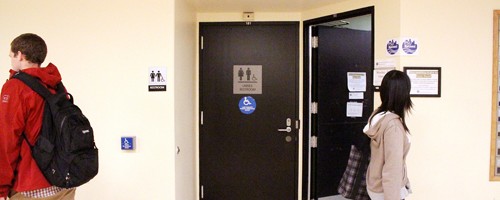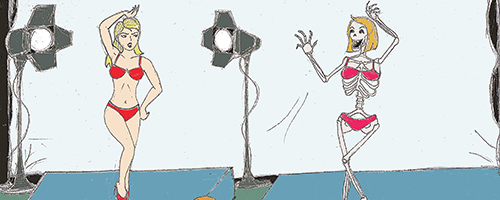Oregon is known for many things: Crater Lake, the filming location for The Goonies, the Oregon Ducks, massive amounts of natural beauty and, of course, Portland. As cool as all of these things are, there is a part of Oregon that many seem to conveniently forget—the artists.
Art for art’s sake
Oregon is known for many things: Crater Lake, the filming location for The Goonies, the Oregon Ducks, massive amounts of natural beauty and, of course, Portland. As cool as all of these things are, there is a part of Oregon that many seem to conveniently forget—the artists.
When I say artists, I don’t just mean those who paint nice landscapes of the Cascades or the Willamette River. No, I am talking about writers, playwrights, painters, dancers, musicians and basically anything that involves creative thoughts and practices. As liberal as Oregon may seem (it is, after all, a state statistically claimed by the Democratic party), there is still quite a heavy following of inhabitants who consider the state to be “backwater.”
In an article recently published by The Oregonian, Anne Richardson said that while talking to a programmer for a local film festival, he stated that he could not identify the Oregon roots of a visiting director because it would “turn off his audience.” Richardson went on to say that “Portlanders [want] better than that. They [want] art created by people who did not grow up in Oregon.”
So what is it about Oregon that makes us want to belittle our artists and not give them the support they need? If we disown our local artists then we are setting a horrible example for generations to come. Not to mention doing the opposite of cultivating and nurturing a healthy art culture.
Right now Oregon has a chance to really make a splash both within and without its art culture. Ken Kesey died in 2001. Upon his departure from this world he left behind letters, manuscripts and diaries, all of which are currently housed in the University of Oregon’s Special Collections Library.
For those of you who do not know, Ken Kesey was the author of One Flew Over the Cuckoo’s Nest and considered himself to be the link between the beat generation of the 1950s and the hippies of 1960s. After a long life of acid trips, pranking and writing, Kesey settled down in Oregon.
Right now, whether or not Kesey’s old documents will stay in Oregon is up in the air. The decision, of course, is left up to the Kesey family, who has several options to choose from.
These include Stanford University, because Kesey attended the institution for his graduate studies; the University of Texas in Austin, because of the university’s already large Ransom Collection; the University of California at Berkeley, because it already houses the writings of Joaquin Miller; or the Huntington Library in San Marino, which already has claim to papers by Oregon writer C.E.S. Wood.
While all of the possible new locations for Kesey’s work make sense in terms of history, the documents have been at home at UO for a good long while now; why change that? Many of the other institutions vying for the ownership of Kesey’s works already have access to the writings of other authors.
It is also important to remember how many UO students use Kesey’s work for their own individual studies. If these documents are removed from UO, those students will have to hop on a plane to read about Kesey and his amazing life. Not cool.
James Fox, head of Special Collections at UO, said, “The opportunity to acquire this archive will not be available again. The collection may well leave the state of Oregon or be divided and sold into private hands.”
The idea of Kesey’s works being sold or auctioned into a private collection is a sad one indeed. Kesey’s family has given Oregon the opportunity to permanently purchase Kesey’s work. If the state fails to jump on this amazing opportunity, it will be a loss to the public, the university system and to many Oregon students.
This is not to say that Oregon completely disowns its artistic patronage. The Mark Rothko exhibit at the Portland Art Museum (which ended May 27; if you didn’t see it, you missed out big time) showed that Oregon does occasionally take pride in its artists.
While this is a great first step, more can always be done. The Wall Street Journal recently compared Portland’s art scene to New York’s. Coming from an internationally renowned publication, that is pretty impressive. Now, can Oregon get over its strange need to be “backwater” and commit to improving its art scene and supporting its artists?
Carrie Brownstein, (you know her—or at least you should—from Sleater-Kinney, Wild Flag and, of course, Portlandia) has made a name for herself as a comedian by poking fun at Portlanders who are interested in being special and artistic. As funny and oftentimes spot-on as her impressions are, it might be true that some of us Oregonians are in fact special, talented and artistic.
The prospect of Ken Kesey’s work being transplanted to a non-Oregon institution is just one example of how Oregon needs to get its act together and support a growing art culture. Without artists, there is no art, and without art, well, what’s the point? It’s high time for Oregon to stop being backwater and start being the state full of creativity and culture it is capable of being. Long live the arts.




